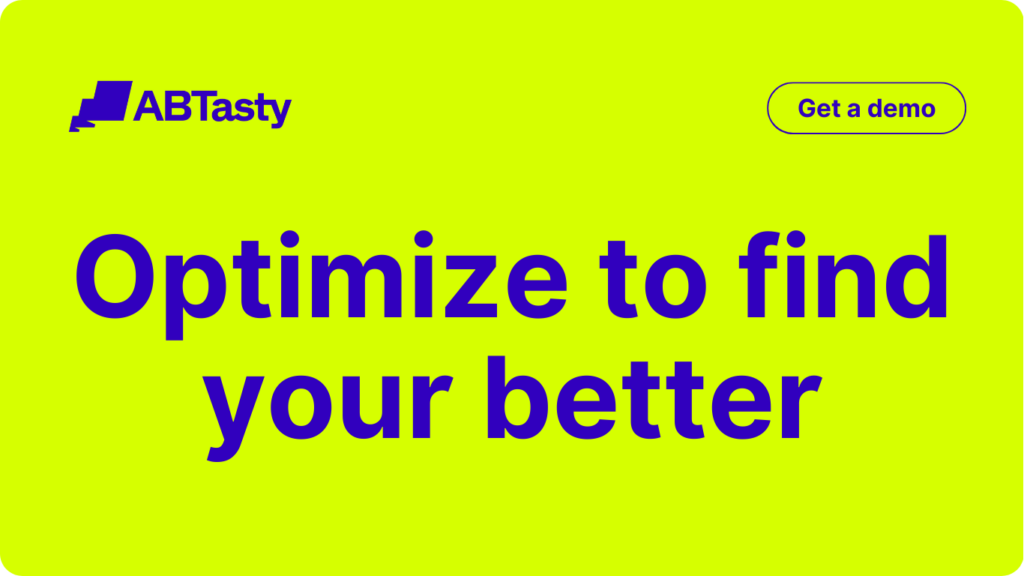Imagine this: You see a continual drop in conversions on your e-commerce website. In particular, customers are abandoning their carts and not completing their purchases.
Based on previous experience, you decide to take action by switching up a few elements on the checkout page.
But it’s still not getting you the results you’ve hoped for; instead, you see your conversions going even further down. What went wrong?
How experiments can come to the rescue
There’s always a certain degree of risk in business and any wrong move can be a potential loss in profit. How can you test your ideas without breaking your website and negatively impacting your business?
Thanks to A/B, A/B/C and multivariate testing, you can manage and even reduce that risk before making a big decision that could hurt your bottom line.
Before we go any further, let’s look at a simple definition of A/B testing.
A/B testing is a marketing technique that involves comparing two variations or versions of a web page or application, randomly presented to users, to see which performs better by evaluating how they impact your KPIs.
The results of such tests will help you assess the risk of your business decision as it presents an opportunity to gather feedback from the people with the most valuable opinions — your customers. Otherwise, you’d make the decision based on personal opinions rather than customer preferences, eventually leading you down the wrong path.
A/B testing helps steer you in the right direction by enabling you to test and learn quickly if something works or not before embedding it into the back-end or permanent coding.
If you don’t take steps to manage risks, you’d never be able to tell if your new ideas will resonate with your customers or if they’re worth the investment. However, when you run A/B tests, you can minimize the risk of any drastic business impact.
For example, you can make a pretty website by changing colors but if this change drives down conversions then you’ll have a nice looking but poor performing website. Thus, A/B testing gives you the green light to go through with an idea by monitoring how it’s affecting your KPIs.
Experimentation is the most efficient way to eliminate rolling out a bad idea for your website or prove the value of a change before investing time and resources. It’s a golden opportunity to learn what really drives conversions so you can use the data extracted to fully commit to any changes in UX.
Even if an experiment doesn’t turn out the way you planned, you can still use it as a learning experience on what your customers don’t want so that you stay on the right track.
To get the most out of your A/B tests, you need to leverage both quantitative and qualitative data when it comes to effective decision-making. In other words, running these experiments is important, but it’s the quick steps you take after based on the results that will make all the difference.
AB Tasty is a great example of an A/B testing tool that allows you to quickly set up tests and gather results to help you mitigate risk with ease. With low code implementation of front-end or UX changes on your web pages, you can gather insights via an ROI dashboard, determine which route will increase your revenue, and achieve the perfect digital experience for your customers.
In summary, always make sure you test new features or changes prior to release to make sure they take your business metrics in the right direction. Even if it seems like it’s a very minor change, it could still have a significant impact on your conversions and revenue.
Steer your A/B test in the right direction
While you’re running an experimentation campaign, there’s also another layer of risk when randomly allocating users to your variations as so often happens to be the case during an A/B test. What if there’s a variation that you notice is performing poorly? How can you quickly turn this off before more traffic is exposed to the variation?
Luckily, there’s a way to further minimize risk during an A/B test and that’s through dynamic allocation, a capability offered by advanced A/B testing solutions such as AB Tasty.
Dynamic allocation seeks to limit loss due to the lowest performing variations so that fewer visitors are sent to the “bad” variations to maximize outcome, as can be seen in the image below.
For example, if you run an A/B test with two variations with the goal to increase conversions on the checkout page and variation B is performing well and has a high conversion rate, then the traffic to that variation is adjusted (and increased) accordingly.
One of the advantages of dynamic allocation is risk mitigation. This will enable you to confidently and safely test new elements. If they don’t work out as predicted, then the traffic allocated will be gradually reduced so fewer users will access it.
Make risk-free and data-driven decisions with A/B testing
Any new changes or releases you have in the works shouldn’t be driven by your gut feeling but rather from a combination of quantitative and qualitative data, the kind of data and insights that you can only obtain from running tests and experiments. This enables you to optimize your website accordingly rather than speed up losses from a misguided UX change based solely on personal opinion.
A/B testing doesn’t have to be a risky endeavor. Features such as dynamic allocation can make all the difference when running A/B tests to avoid any significant loss in conversions from a poorly performing variation.
In the end, it’s a win-win situation: you get valuable insights while managing risk and your customers receive higher-quality products they actually want resulting in enhanced customer satisfaction.
With AB Tasty, you never have to lose a single conversion. Get started building your A/B tests today with our best-in-class software solution to explore how you can get maximum results with minimal effort thanks to our dynamic allocation capability.







